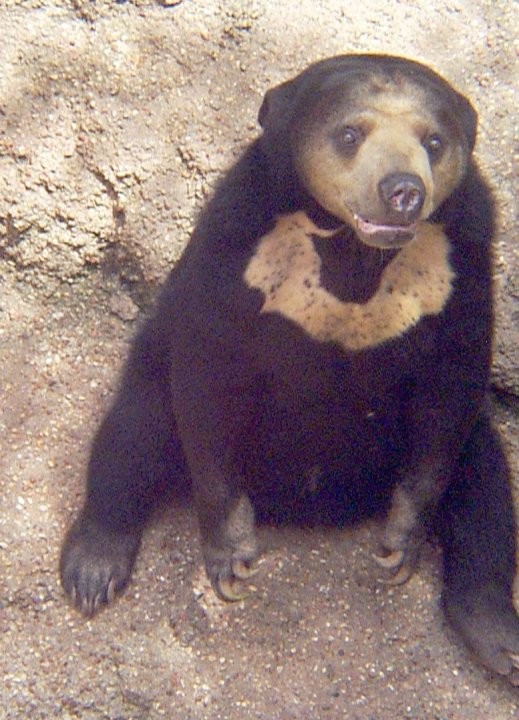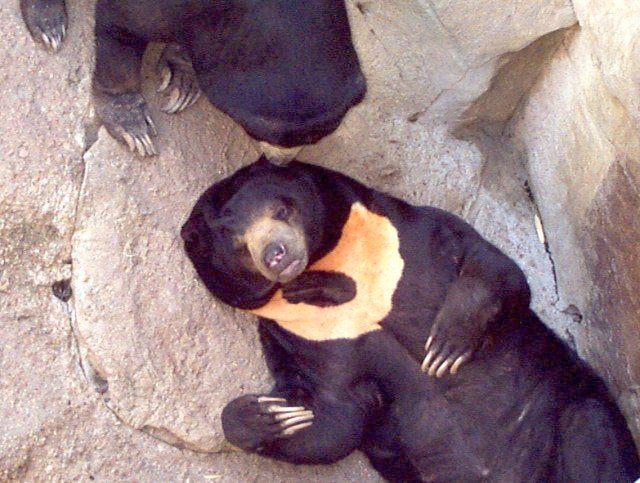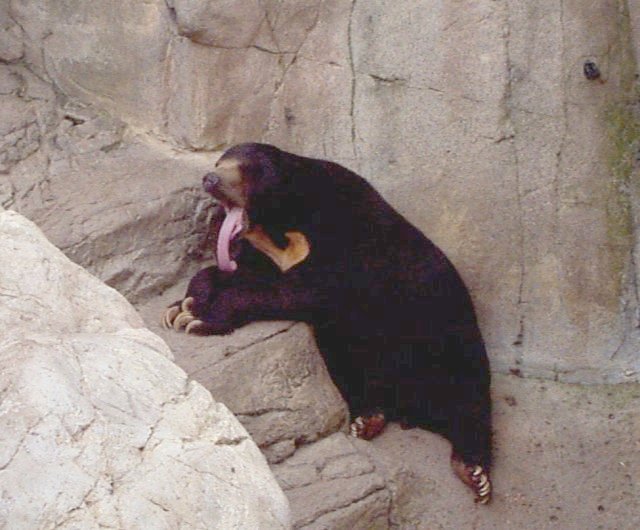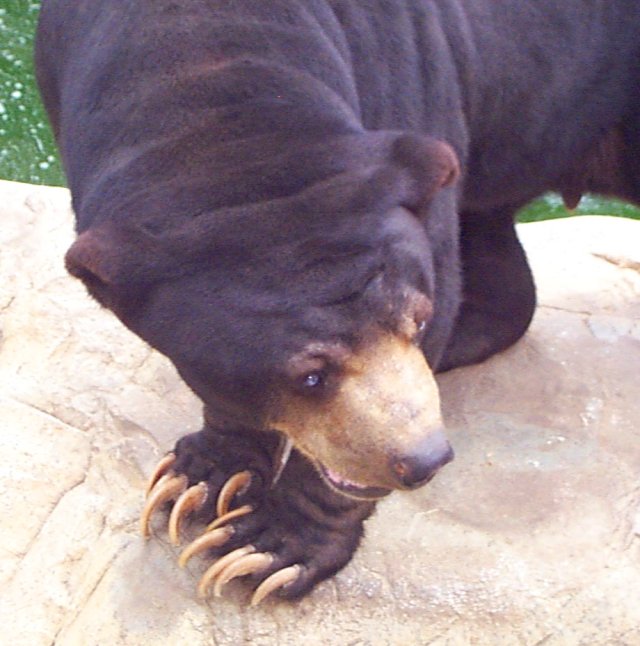 |
Name: Malayan Sun bears |
| Scientific name: Helarctos malayanus | |
| Range: Tropical/ subtropical forest. Southeastern portion of Asia (Borneo, Burma, Kampuchea, Laos, Malay Peninsula, Thailand, Cambodia, Bangladesh, South China possibly, Sumatra, &Vietnam. | |
| Habitat: Makes it home in low land tropical and rain forest area of Southeastern Asia. | |
| Status: Due to habitat destruction serious threat is Asian pet trade. Also different parts are believe to potent medicines, especially gallbladders. | |
| Diet consists mostly of termites, birds, small mammals, and even bits of oil palms, and other commercial crops. | |
| Diet in the zoo: omnivorous diet. | |
| Location in the zoo: Asian Falls |


